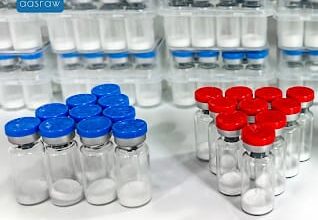The Benefits of Using and Optimizing a Clean-In-Place System
Clean-in-place (CIP) is a system that helps businesses clean the internals of their equipment without disassembly or moving it. The CIP system incorporates various cycles that include a pre-rinse, a wash, a post-rinse, and a sanitization step. Each of these steps takes time, consumes cleaning products, and costs money. However, businesses can optimize this process, which exposes the benefits of using this system as well as optimizing it.
Reducing the Time it Takes to Clean Equipment
In the dairy, beverage, and pharmaceutical industries, cleaning the manufacturing equipment is crucial to avoid contamination that can lead to serious risks to customers and users of the company’s products. Cleaning the equipment helps reduce this risk by ensuring all this equipment is as clean as possible.
The problem is that this process can take a lot of time if the equipment is to be assembled and reassembled before and after each clean. Clean-in-place eliminates both of these steps and helps businesses reduce the time and labor required to clean their equipment.
Cleaning More Efficiently
Clean-in-place also allows businesses to use cleaning chemistry that would otherwise not be viable for use in manual cleaning. For example, lotions and creams containing compounds like zinc oxide and titanium dioxide can be cleaned using appropriate chemicals and at higher temperatures that would otherwise not be possible. By doing so, the cleaning becomes more effective, faster, and safer.
Reducing Wastage
CIP also allows businesses to reduce their water and chemical usage during the cleaning process. A CIP system does this much better than past manual CIP options because everything can be automated now.
The types of saving a business can get depends on the type of manufacturing facility it is, and the quality of the water being used. For example, some pharmaceutical applications require the use of water for injection (WFI) for cleaning. A reduction in the amount of water used, even if it is a few gallons per cleaning cycle, can result in savings of millions of dollars every year.
This is for a single line. Now think of the savings in a plant that has numerous machines that need to be cleaned this way.
Reduced Contamination
CIP systems eliminate contamination from particulate matter, microbes or through cross-contamination. This is because the system can be set up with transfer panels such that each line receives water that is not contaminated by materials and compounds from other lines.
Additionally, businesses can source stainless steel sanitary piping for use in CIP systems to ensure sanitary conditions once cleaning and sanitizing are complete.
Reduce Waste Disposal Costs
The reduced use of water and cleaning chemicals in optimized CIP systems also results in a lot less waste that the business needs to dispose of. This directly translates into reduced waste disposal costs.
Another benefit of reduced amounts of waste is reduced impact on the environment, especially when coupled with proper disposal of the cleaning chemicals and water used in these processes.
Clean-in-place is of huge help in industries where disassembling equipment to clean it is not feasible. It does have a lot of benefits, especially when the process is optimized to be as efficient as possible.




